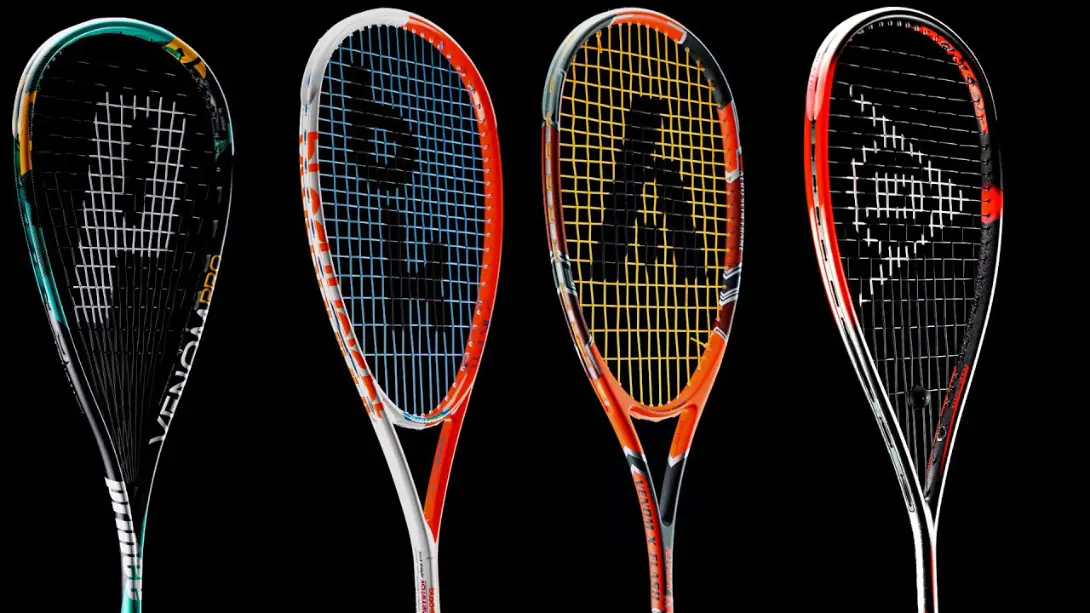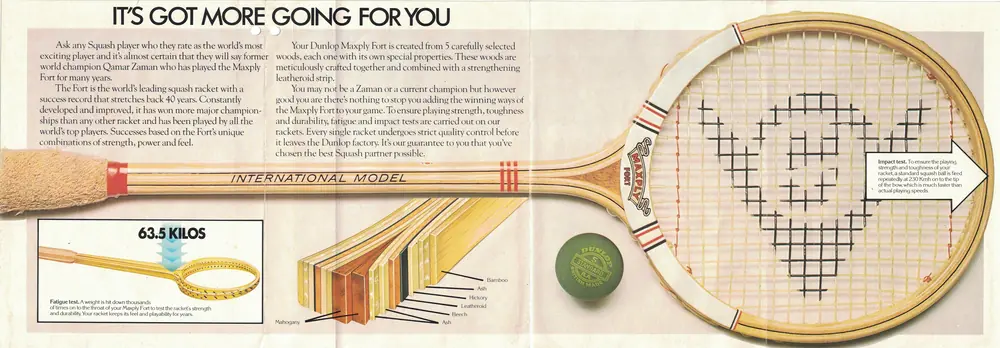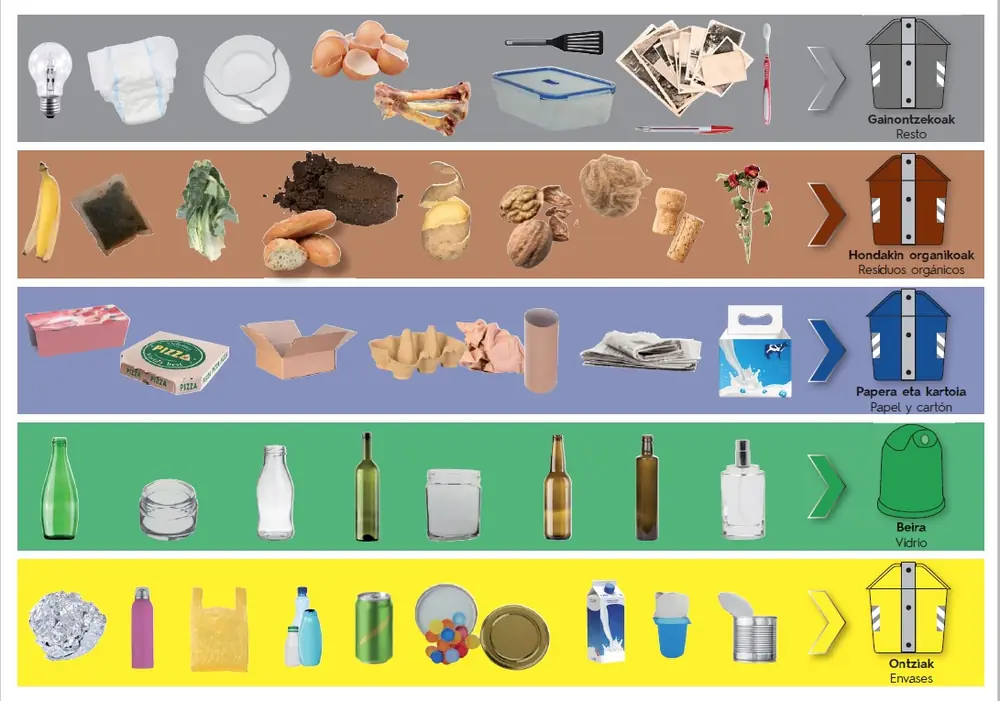21 November 2022 / 3-Min Read / Translate
There have been some major changes in squash racket technology over the years. Between hand made wooden rackets to factory production, from factory production wooden rackets to early graphite, from early graphite to teardrop shaped frames and beyond. Let’s ignore steel- or ceramic-shafted, and aluminium frames as they didn’t really result in better rackets.
There was a time, when every couple of years the difference between rackets was big enough to justify buying or at least consider buying a new racket. I don’t believe that is still true. So nowadays, if you are happy with your racket I suggest you consider buying another one just like it, as the likelihood is that in a year or so, you won’t be able to.

Shiny new squash rackets for you to choose from
Squash rackets (and probably other racket sports too) are not too dissimilar to mobile phones. They went through a massive change and we have reached the point where each year the changes are smaller. Manufacturers need you to buy their rackets as often as possible. In the past you had little choice because they broke much easier than nowadays, but I find that in general modern rackets are pretty strong.
Unbreakable rackets would be BAD for business – at least from a manufacturer’s point of view. That’s why every year or so, brands need to update their range and try to sell you the latest technology and design. I don’t blame them but we need to realise that not everything they say is completely true.

This is one side of the leaflet you got when you purchased the Dunlop Maxply Fort squash racket
Unless a racket has a distinctive feature, e.g. the Prince PowerRing, if I were to take , say 10 rackets made between 2012 and 2022. Remove all the paintwork and any other distinguishing marks and had the average club player test them, I highly doubt they would be able to notice a clear improvement.
Yes, they would notice a difference between some or most of them, but that’s not the same as noticing an improvement. Rackets really are a personal thing and there is no clear hierarchy of best racket to worst racket.
I’ve already compared squash rackets to mobile phones and now it’s time to make another comparison: Squash rackets are like art: What one person loves, another hates.
I constantly tell players to try as many rackets as they can at every opportunity. Not because you might find a “better racket”, but because you might find a “more suitable racket for you”. Rackets come in a variety of different weights, balances and stiffness (not talked about much anymore) and finding that right combination is key to finding your dream racket.
In the interests of fairness, I do want to add that most manufacturers are not trying to cheat consumers. They are doing research and development to make their rackets better than other manufacturers. They do this not out of love for you, the consumer, but out of the desire to sell more rackets. We live, well everybody in Europe, North America and many other countries, in a capitalist society, so let’s not act surprised.
Making better rackets is good for them, but the line between better rackets and better marketing is a fine one. Which takes us back to what I said earlier: “Don’t believe the marketing hype!
In the grand scheme of things, a squash racket is not like a car or large domestic appliance with regard to the environmental cost. At least I don’t think it is. Does anybody anything about that aspect? Let me know. But I stand by the 4 Rs: Reduce, Reuse, Repurpose and Recycle. Why buy a new racket if the difference between your current one and new one is marginal? Spend time improving your skill or fitness!

I can't see a squash racket listed, can you?
Squash rackets really have been getting stronger over the years and the second-hand squash racket market is blooming. Even here in Spain, the range of rackets is wide, from wooden rackets to rackets only a year or so old. If you really feel the need to change your racket, either donate it to your local club or sell it. Please don’t just put it in the basement or attic and forget about it. Let somebody else have the pleasure of using it.
I will concede that if, as I suggest you do, you try lots of rackets and find one that is so much better than yours, then yes, you should consider buying it. However, is it better because the frame is better or because you probably should restring your racket. And there is the problem! If you haven’t had your racket restrung ina long time, that *might* be a cheaper solution. It’s hard to say though.
I stand by my assertion that nowadays each year's range is very very similar to last year's range, irrespective of manufacturers. Yes, some years something new and exciting is introduced, but not very often and I would question whether it really makes much difference to the average club player.
Disagree with me? Email me your personal experience and I might add it to a post-publication section.